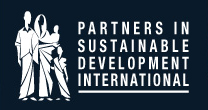7 Facts About Healthcare in Bangladesh (Pre-Pandemic)
We are sharing a blog post originally created by The Borgen Project it appropriately addresses the issues with healthcare in Bangladesh.
Healthcare in Bangladesh is not as sophisticated as in more developed countries; however, the country is working to improve and provide further funding to its healthcare system. So far Bangladesh has made great strides in increasing healthcare access for its people, but there is still a long way to go. Here are seven important facts about healthcare in Bangladesh.
Bangladesh has a pluralistic healthcare system. This healthcare system is highly decentralized. As a result, it is regulated and controlled by for-profit companies, NGOs, the national government and international welfare organizations. This shared power has caused many problems, including unequal treatment programs between social classes. Even though the laws and overall system are spearheaded and steered by the Ministry of Health and Family Welfare, other organizations have considerable influence on the decision-making.
There is a shortage of physicians, specialists and clinical equipment. In Bangladesh, the number of physicians per 10,000 people is only about 3.06, which is significantly low. The number of nurses per 10,000 people is even lower, standing at 1.07. Additionally, only 35% of health and clinical facilities[i] in the country have more than 75% of sanctioned staff working and there is a 36% vacancy in sanctioned healthcare workers. There is also a 50% vacancy in alternative medicine providers. These numbers are one of the reasons that Bangladesh’s quality of healthcare is low compared to many other Asian countries.
Non-communicable diseases are the leading cause of death in Bangladesh. Most deaths[ii] are caused by cardiovascular diseases, cancers, diabetes, chronic respiratory diseases and malnutrition. There are almost no alcohol-related deaths due to alcohol consumption and sale being illegal in the country. A study by the World Health Organization (WHO) found that tobacco usage has decreased for both men and women, with only 23% of the population using tobacco products. Obesity has remained low, rising slightly, but still only affected 2% of adolescents and 3% of the adult population. However, poor nutrition is still prevalent, leading to diabetes and high blood pressure.
Most physicians and healthcare workers are concentrated in urban areas. Rural areas often do not have proper healthcare facilities. To remedy this, the national government has set up many government-funded hospitals in rural areas that provide cheaper treatment for rural citizens. However, these hospitals are often poorly funded, understaffed and overly crowded due to a limited number of healthcare options in rural areas.
Enrollment in medical colleges and healthcare training facilities has increased. This will benefit the country by increasing the number of healthcare workers in proportion to the population. However, this is only a recent trend and these future healthcare workers must complete their education and training before being able to fully practice their professions. The HPNSDP (Health, Population and Nutrition Sector Development Program) have already begun drafting and implementing a plan to further increase the number of nurses and midwives through training and education facilities.
Socioeconomic inequality affects healthcare in Bangladesh. One area this can be seen in is infant mortality. The infant mortality rate for the lowest income quintile is 35 deaths per 1000 births[iii], while infant mortality for the highest income quintile is only 14 deaths per 1000 births. One of the main reasons for this inequality is that most poor Bangladeshis live in rural areas that do not have adequate hospital facilities. However, even in urban areas, socioeconomic inequality has a large impact. A person with more money is generally able to receive better healthcare than someone who is poorer and cannot afford certain treatments or services. This is due to the fact that the healthcare system is decentralized and partially run by for-profit healthcare and pharmaceutical companies.
Limited government funding has led to high out-of-pocket payments. One of the other reasons poorer citizens in Bangladesh cannot afford certain treatments or services is high out-of-pocket costs. On average, Bangladeshi citizens must pay 63.3% of the total cost[iv], while the government pays the rest. This system creates a significant financial burden for impoverished families, sometimes forcing them to either forego treatment or go into debt. To reduce this burden, the government must increase healthcare funding.
These seven facts about healthcare in Bangladesh illustrate some of the barriers that Bangladesh must overcome to provide high-quality healthcare across the nation. The Bangladeshi Government’s constitution upholds that all citizens will be provided with equal treatment, including in healthcare. To achieve this, the government needs to address the current inequality and continue to make healthcare a focus of its efforts.
– Sadat Tashin with The Borgen Project, https://borgenproject.org/
PSDI is working hard to raise funds to support and expand our integrated healthcare program in the areas we work in Bangladesh as they have proven to be effective in positively impacting the overall health of the poor families we serve.
[i] https://www.who.int/workforcealliance/countries/bgd/en/
[ii] https://www.worldatlas.com/articles/the-10-leading-causes-of-death-in-bangladesh.htmlhttps://www.who.int/workforcealliance/countries/bgd/en/
[iii] https://www.hindawi.com/journals/aph/2019/4954095/
[iv] https://www.ncbi.nlm.nih.gov/pmc/articles/PMC5586060/
